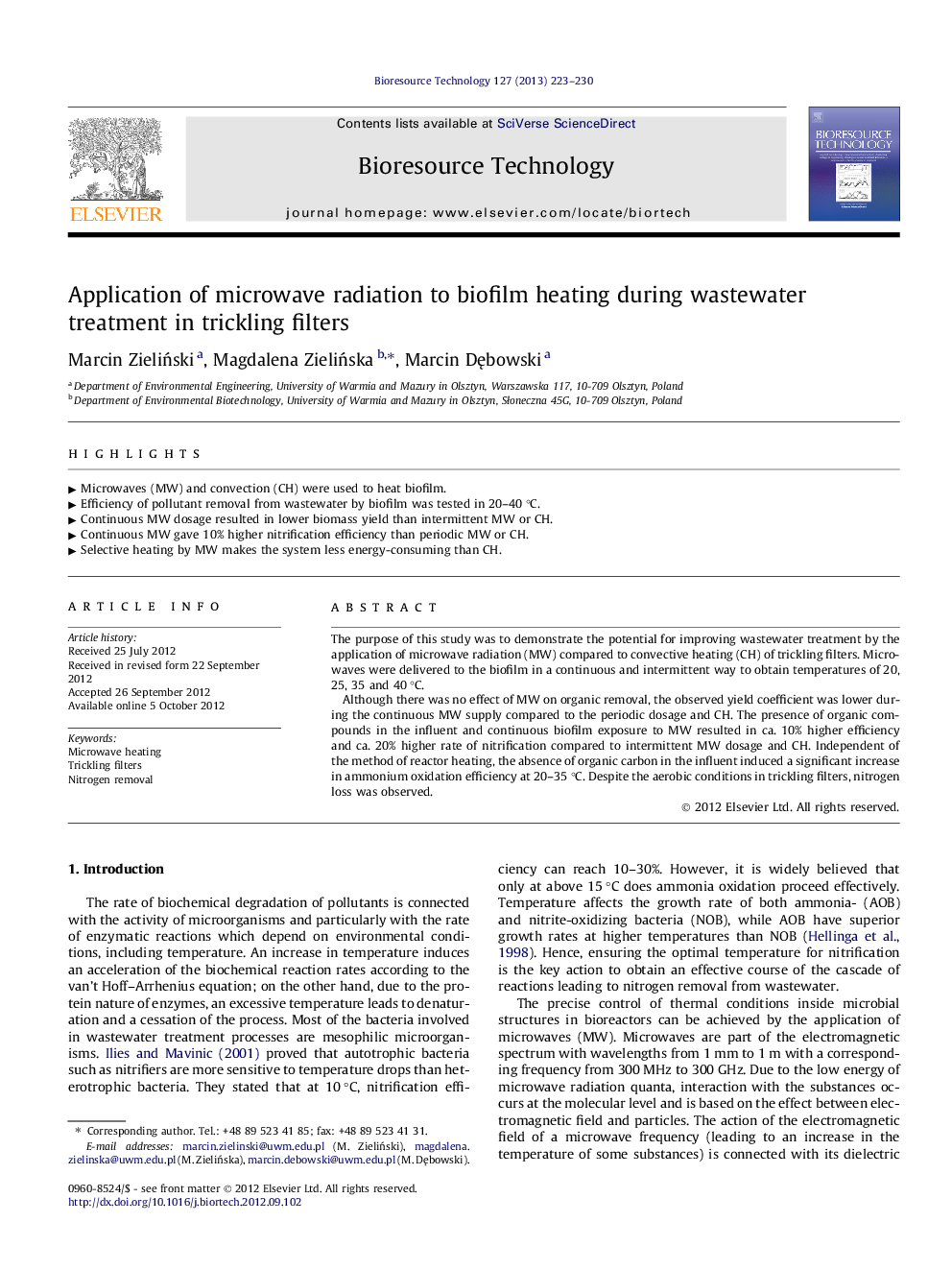| کد مقاله | کد نشریه | سال انتشار | مقاله انگلیسی | نسخه تمام متن |
|---|---|---|---|---|
| 681183 | 1460016 | 2013 | 8 صفحه PDF | دانلود رایگان |

The purpose of this study was to demonstrate the potential for improving wastewater treatment by the application of microwave radiation (MW) compared to convective heating (CH) of trickling filters. Microwaves were delivered to the biofilm in a continuous and intermittent way to obtain temperatures of 20, 25, 35 and 40 °C.Although there was no effect of MW on organic removal, the observed yield coefficient was lower during the continuous MW supply compared to the periodic dosage and CH. The presence of organic compounds in the influent and continuous biofilm exposure to MW resulted in ca. 10% higher efficiency and ca. 20% higher rate of nitrification compared to intermittent MW dosage and CH. Independent of the method of reactor heating, the absence of organic carbon in the influent induced a significant increase in ammonium oxidation efficiency at 20–35 °C. Despite the aerobic conditions in trickling filters, nitrogen loss was observed.
► Microwaves (MW) and convection (CH) were used to heat biofilm.
► Efficiency of pollutant removal from wastewater by biofilm was tested in 20–40 °C.
► Continuous MW dosage resulted in lower biomass yield than intermittent MW or CH.
► Continuous MW gave 10% higher nitrification efficiency than periodic MW or CH.
► Selective heating by MW makes the system less energy-consuming than CH.
Journal: Bioresource Technology - Volume 127, January 2013, Pages 223–230